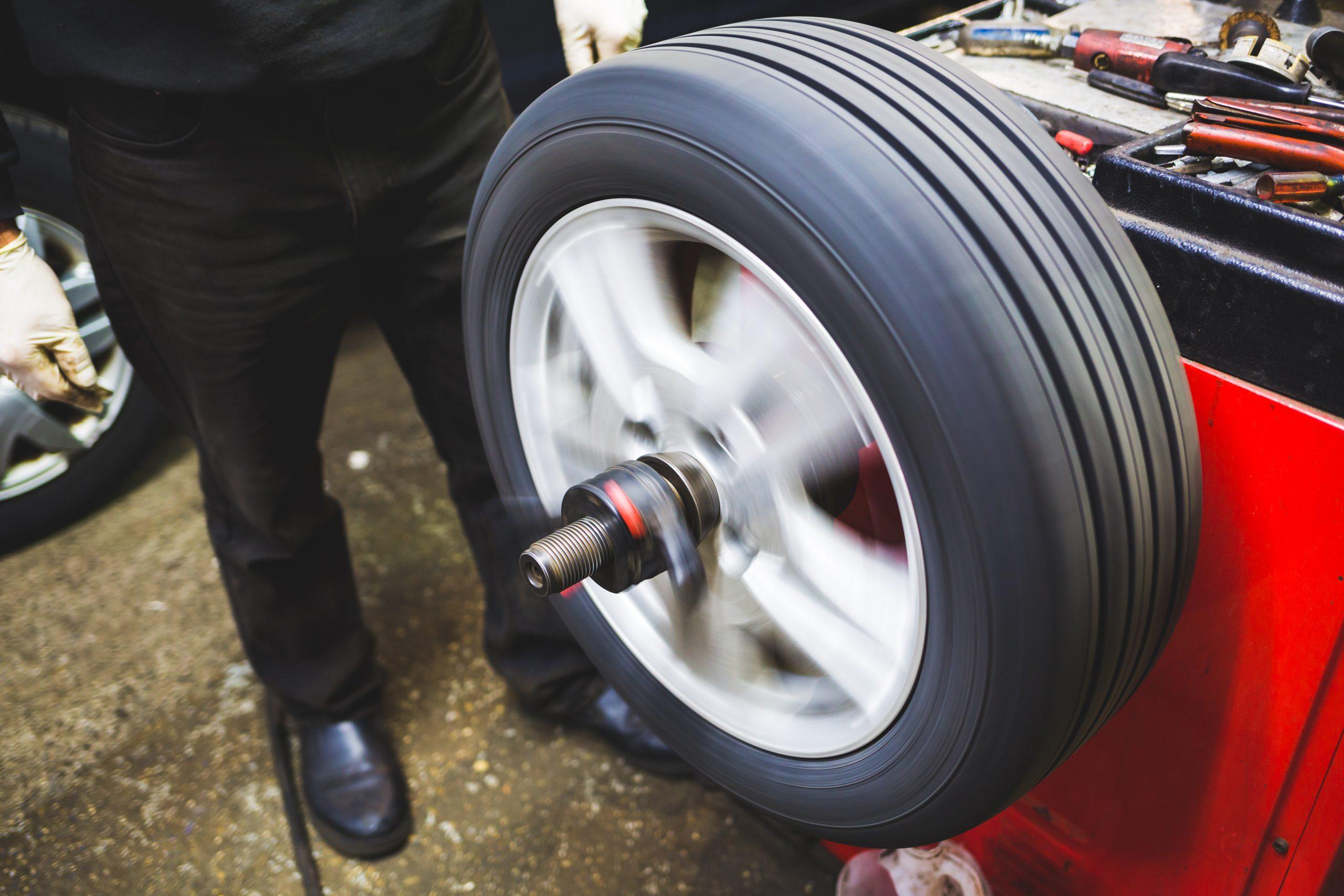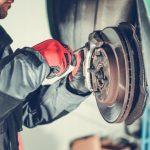
Alignment vs. Balancing: What’s the Difference?
- Harbor Brakes
- December 22, 2023
- Alignment
- alignment, alignment near me, alignment shop near me, balancing, tire balance, tire balancing
When it comes to maintaining your vehicle’s performance and safety, two key maintenance tasks come to mind: wheel alignment and tire balancing. Both services contribute to a smoother ride, but they serve different purposes. Wheel alignment focuses on correcting the angles of your tires, while tire balancing addresses weight imbalances in the wheels. Understanding the difference between these two services is crucial for keeping your vehicle in top shape.
Key Takeaways:
- Wheel alignment corrects the angles of the tires, while tire balancing addresses weight imbalances in the wheels.
- Proper wheel alignment improves handling and prevents excessive tire wear.
- Tire balancing prevents vibration, excessive tire wear, and damage to the suspension.
- Regular balancing and alignment services extend tire life and ensure a safer and more comfortable driving experience.
- Qualified technicians at automotive service centers can perform balancing and alignment services.
Purpose of Tire Balancing and Wheel Alignments
When it comes to maintaining your vehicle’s performance and safety, tire balancing and wheel alignments are two essential services to consider. While they may be separate processes, they work together to ensure your vehicle operates smoothly on the road. Let’s take a closer look at the purpose of tire balancing and wheel alignments:
Tire Balancing
Tire balancing is necessary to correct the uneven distribution of weight in your wheels. Over time, the weight balance can become disrupted due to factors such as tire tread wear, pothole impacts, or even the installation of new tires. When the weight in your wheels is unevenly distributed, it can lead to vibration, increased tire wear, and damage to your suspension system. By balancing your tires, you can prevent these issues and enjoy a smoother, more comfortable ride.
Wheel Alignments
Wheel alignments, on the other hand, involve adjusting the angles of your tires. Over time, the alignment of your wheels can become misaligned due to various factors such as hitting curbs, driving over rough roads, or general wear and tear. When your wheels are misaligned, they can cause your vehicle to pull to one side, result in uneven tire wear, and even affect your overall handling and safety on the road. By getting regular wheel alignments, you can ensure that your tires make proper contact with the road surface, improve handling, and prevent premature tire wear.
| Benefits of Tire Balancing | Benefits of Wheel Alignments |
|---|---|
| Prevents vibration | Improves handling |
| Reduces tire wear | Extends tire life |
| Protects suspension system | Prevents damage to steering and suspension components |
By understanding the purpose of tire balancing and wheel alignments, you can prioritize these maintenance tasks and ensure the longevity and performance of your vehicle. Regular balancing and alignments not only enhance your driving experience but also contribute to your safety on the road.
What is Tire Balancing?
Tire balancing, also known as wheel balancing, is a critical maintenance procedure that corrects weight imbalances in the wheels of your vehicle. When the wheels are not balanced properly, it can lead to various issues, including vibration, excessive tire wear, and damage to the suspension system. To ensure a smooth and safe ride, it is essential to have your tires balanced regularly.
During a tire balancing service, the tires and wheels are carefully mounted on a specialized machine known as a tire balancing machine. This machine measures the imbalance in the wheels and allows the technician to install precise tire weights to achieve a balanced wheel and tire assembly.
The primary goal of tire balancing is to distribute the weight evenly across all four wheels, ensuring that each wheel rotates smoothly and meets the road surface properly. By achieving proper tire balance, you can enhance your vehicle’s stability, reduce vibrations, and prevent premature tire wear.

What is Wheel Alignment?
Proper wheel alignment is crucial for maintaining your vehicle’s performance, safety, and longevity. It refers to the adjustment of your vehicle’s suspension system, which connects the vehicle to its wheels. Wheel alignment ensures that your vehicle travels straight down the road and prevents it from veering to the right or left.
During the wheel alignment process, the angles of the tires are adjusted so that they are perpendicular to the ground and parallel to each other. This optimization allows for proper contact between the tires and the road, resulting in improved handling, increased tire lifespan, and enhanced fuel efficiency.
Wheel alignment also helps prevent unusual vibrations and uneven tire wear, which can lead to costly repairs in the long run. By addressing these alignment issues proactively, you can maintain optimal stability, safety, and comfort while driving.
Here’s a visual representation of the wheel alignment angles:
| Alignment Angle | Optimal Range | Effects of Misalignment |
|---|---|---|
| Camber | Slightly positive or slightly negative | Uneven tire wear |
| Toe | Zero or slightly inward (toe-in) | Rapid tire wear, pulling to one side |
| Caster | Positive or negative (depending on the vehicle) | Steering instability |
| Thrust Angle | Parallel to the rear axle | Vehicle drifts to one side |
Regular wheel alignment checks and adjustments are recommended as part of your vehicle’s maintenance schedule, typically every 6,000 miles or twice a year. By staying proactive with wheel alignment, you can ensure your vehicle performs at its best and enjoy a smoother, safer driving experience.
Signs Your Tires Need Balancing
Proper tire balancing is essential for maintaining a smooth and safe ride. If your tires are not balanced correctly, you may experience various signs indicating the need for balancing. Pay attention to the following symptoms that could suggest your tires need balancing:
- Uneven tire wear: If you notice that one or more tires are wearing out faster than the others, it could be a sign of imbalance. Uneven tire wear typically occurs when the weight distribution in the tires is not optimal.
- Vibration in the steering wheel, floorboard, or seat: Excessive vibration while driving is a common indicator of tire imbalance. If you feel vibrations in the steering wheel, floorboard, or seat, especially at higher speeds, it’s time to have your tires balanced.
- Imbalance in the steering wheel or seats: If you find that your steering wheel or seats feel off-center or imbalanced, it may indicate that either the front or back tires need balancing. This misalignment can affect your vehicle’s stability and handling.
- Tire rotation, flat tire repair, or regular maintenance: Tire balancing is often necessary after tire rotation, flat tire repair, or as part of regular maintenance. These activities can disrupt the weight distribution in your tires, requiring a balancing service to ensure optimal performance.
Regularly inspecting your tires for these signs and addressing any imbalances promptly can help extend the lifespan of your tires, improve vehicle handling, and ensure a safer and more comfortable driving experience. If you notice any of the signs mentioned above, it’s recommended to visit a reputable auto service center for a professional tire balancing service.
Signs Your Tires Need Balancing
| Signs | Indication |
|---|---|
| Uneven tire wear | One or more tires wearing out faster than others |
| Vibration in the steering wheel, floorboard, or seat | Excessive vibration felt while driving, especially at higher speeds |
| Imbalance in the steering wheel or seats | Steering wheel or seats feeling off-center or imbalanced |
| Tire rotation, flat tire repair, or regular maintenance | Activities that can disrupt weight distribution in tires, requiring balancing |
Signs Your Car Needs Wheel Alignment
Keeping your car’s wheels properly aligned is crucial for maintaining optimal performance and safety on the road. Here are some signs that may indicate your car needs a wheel alignment:
- Pulling to one side: If you feel your car pulling to the left or right when driving on a straight road, it could be a sign of improper wheel alignment.
- Rapid and uneven tire wear: Uneven tire wear, where one side of the tire is more worn than the other, is a common indicator of alignment issues.
- Squealing tires: If you notice your tires squealing, especially when going around corners, it could be a sign of alignment problems.
- Crooked steering wheel: When driving straight, your steering wheel should be perfectly aligned. If it’s crooked, it may indicate a misalignment of the wheels.
- Vibrations in the steering wheel: Experiencing vibrations in your steering wheel, especially while accelerating, can be a result of misaligned wheels.
Additionally, certain events such as car accidents, hitting potholes, or running into curbs can knock your wheel alignment out of whack, requiring professional attention.
Regularly checking and maintaining proper wheel alignment can ensure a smoother ride, improved handling, and even extend the lifespan of your tires. If you notice any of these signs, it’s essential to schedule a wheel alignment service as soon as possible.
| Signs Your Car Needs Wheel Alignment | Impact on Vehicle |
|---|---|
| Pulling to one side | Can affect steering control and lead to uneven tire wear. |
| Rapid and uneven tire wear | Shortens the lifespan of tires, potentially leading to costly replacements. |
| Squealing tires | Indicates improper contact between tires and road surface, affecting overall handling and safety. |
| Crooked steering wheel | Compromises steering accuracy and may cause discomfort during long drives. |
| Vibrations in the steering wheel | Can lead to decreased control and stability, potentially causing accidents. |
Benefits of Balancing and Alignment
When it comes to your vehicle’s maintenance, balancing and alignment services offer a multitude of benefits. These essential procedures not only ensure optimal performance but also contribute to your safety on the road. Let’s take a closer look at the advantages of balancing and alignment:
Tire Balancing Benefits:
- Prevents premature tire tread wear: Properly balanced wheels distribute the weight evenly, reducing uneven wear on the tire tread and extending tire life.
- Provides a smoother ride: Balancing eliminates vibrations that can cause discomfort, ensuring a smoother and more enjoyable driving experience.
- Reduces strain on the drivetrain: By eliminating weight imbalances, tire balancing reduces stress on the drivetrain components, leading to improved performance and longevity.
- Improves overall tire performance: Balanced tires offer better traction, improved handling, and enhanced fuel efficiency, allowing your vehicle to perform at its best.
Wheel Alignment Benefits:
- Improves vehicle handling: Proper alignment ensures that your vehicle drives straight and handles accurately, enhancing your control and maneuverability.
- Enhances fuel efficiency: Misaligned wheels can cause unnecessary drag, resulting in increased fuel consumption. Alignment restores optimal positioning, improving fuel efficiency.
- Extends tire life: When your wheels are aligned correctly, tire wear is evenly distributed, prolonging tire life and saving you money on replacements.
- Prevents damage to critical steering and suspension components: Misaligned wheels put excessive stress on important components, leading to premature wear and potential damage. Alignment helps protect these crucial parts of your vehicle.
By investing in regular balancing and alignment services, you will reap the rewards of extended tire life, improved fuel efficiency, enhanced handling, and overall safer driving. Don’t overlook the importance of these maintenance tasks in keeping your vehicle running optimally and ensuring a comfortable journey every time you hit the road.

Importance of Regular Balancing and Alignment
Regular balancing and alignment are crucial for maintaining optimal performance and safety for your vehicle. By addressing weight imbalances and correcting tire angles, you can prevent excessive tire wear, extend tire life, improve handling, ensure proper contact with the road, and reduce vibrations. Neglecting these maintenance tasks can lead to uneven tire wear, decreased fuel efficiency, compromised handling, and potentially unsafe driving conditions.
To ensure your vehicle remains in top condition, it is recommended to have your tires balanced every 5,000 to 6,000 miles or as recommended by your manufacturer. Additionally, your vehicle’s alignment should be checked every 6,000 miles or twice a year.
Benefits of Regular Balancing:
- Prevents uneven tire wear
- Extends tire life
- Improves handling and stability
- Reduces strain on the drivetrain
- Minimizes vibrations for a smoother ride
Benefits of Regular Alignment:
- Enhances fuel efficiency
- Improves vehicle handling and maneuverability
- Extends tire life by ensuring even tread wear
- Prevents damage to critical steering and suspension components
- Ensures the vehicle goes straight and does not pull to one side
By prioritizing regular balancing and alignment, you can optimize your vehicle’s performance, maximize tire longevity, and enhance your driving experience. Don’t overlook these important maintenance tasks and schedule an appointment with a reputable automotive service center to keep your vehicle running smoothly on the road.
| Regular Balancing | Regular Alignment |
|---|---|
| Prevents excessive tire wear | Ensures proper contact with the road |
| Extends tire life | Enhances fuel efficiency |
| Improves handling and stability | Reduces strain on steering and suspension |
| Reduces vibrations for a smoother ride | Prevents damage to critical components |
Conclusion
Proper wheel alignment and tire balancing are essential for maintaining the performance, safety, and longevity of your vehicle. Wheel alignment corrects the angles of the tires, while tire balancing addresses weight imbalances in the wheels. By staying proactive and regularly scheduling alignment and balancing services, you can prevent premature tire wear, enhance handling, and enjoy a smoother ride.
Understanding the difference between alignment and balancing is the first step towards proper vehicle maintenance. Alignment ensures that your tires make proper contact with the road, improving handling and preventing excessive wear. Balancing, on the other hand, eliminates weight imbalances that can cause vibration and damage to the suspension. By addressing both alignment and balancing, you can maximize the lifespan of your tires and protect your vehicle’s critical components.
To maintain optimal condition on the road, it is recommended to have your tires balanced every 5,000 to 6,000 miles or as advised by your manufacturer. Similarly, your vehicle’s alignment should be checked every 6,000 miles or twice a year. Choosing a reputable service provider, such as a Ford service center or an AAA-approved auto repair facility, ensures accurate alignment and balancing services performed by qualified technicians.
By prioritizing the alignment and balancing of your vehicle’s wheels, you can improve performance, increase safety, and extend the lifespan of your tires. Stay proactive, schedule regular services, and enjoy a smoother, more comfortable ride for years to come.
FAQ
What is the difference between wheel alignment and tire balancing?
Wheel alignment corrects the angles of the tires, while tire balancing corrects the weight imbalance in the wheels.
What is the purpose of tire balancing and wheel alignments?
Tire balancing prevents vibration, excessive tire wear, and damage to the suspension, while wheel alignments improve handling and prevent excessive tire wear.
What is tire balancing?
Tire balancing, also known as wheel balancing, corrects the weight imbalance in the wheels to prevent vibration, excessive tire wear, and suspension damage.
What is wheel alignment?
Wheel alignment adjusts the angles of the tires, ensuring proper contact with the road, improving handling, and preventing excessive tire wear.
What are the signs that tires need balancing?
Signs include uneven tire wear, vibration in the steering wheel or seats, and imbalance in the steering wheel or seats.
What are the signs that a car needs wheel alignment?
Signs include the car pulling to one side, rapid and uneven tire wear, squealing tires, a crooked steering wheel when driving straight, or vibrations in the steering wheel while accelerating.
What are the benefits of balancing and alignment?
Balancing prevents premature tire tread wear, provides a smoother ride, reduces strain on the drivetrain, and improves overall tire performance. Alignment improves vehicle handling, enhances fuel efficiency, extends tire life, and prevents damage to steering and suspension components.
How important is regular balancing and alignment?
Regular balancing and alignment are essential for maintaining optimal performance, preventing excessive tire wear, improving handling, ensuring proper contact with the road, and reducing vibrations.
Where can I get balancing and alignment services?
You can get balancing and alignment services at qualified automotive service centers, such as Ford service centers, AAA-approved auto repair facilities, or trusted local mechanics.
What is the importance of aligning and balancing your wheels?
Aligning and balancing wheels ensure optimal performance, safety, and longevity of your vehicle by preventing excessive tire wear, improving handling, and providing a smoother ride.
Conclusion
Proper wheel alignment and tire balancing are essential for maintaining your vehicle’s performance, safety, and longevity. By understanding the difference between alignment and balancing and staying proactive with these maintenance tasks, you can ensure your vehicle remains in optimal condition on the road.
Source Links
- https://wiygul.com/support/1648/wheel-alignment-vs-wheel-balancing-whats-the-difference/
- https://www.springfieldford.net/difference-between-tire-balance-and-wheel-alignment.htm

